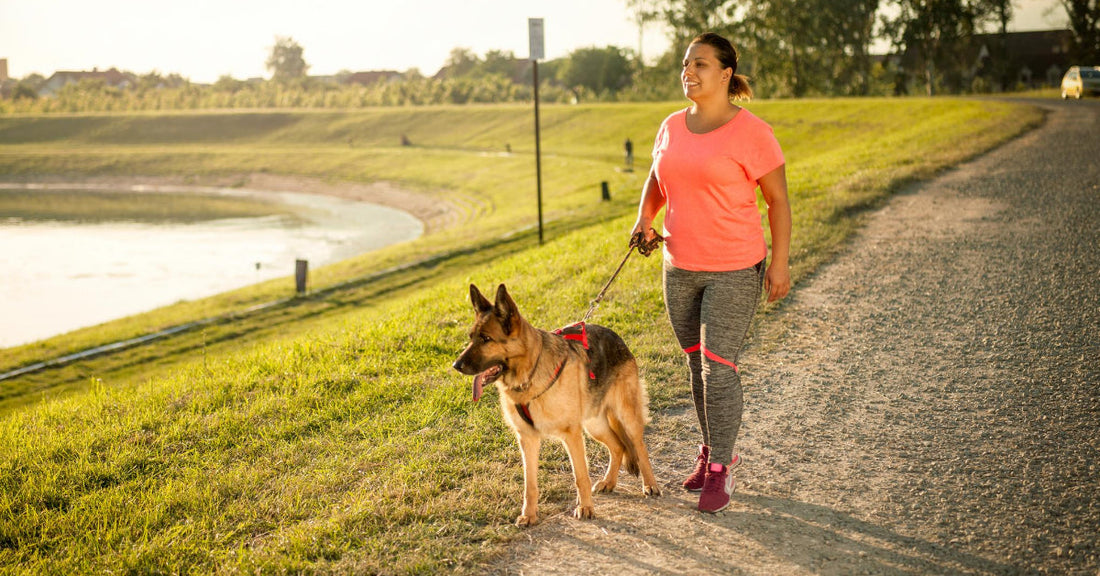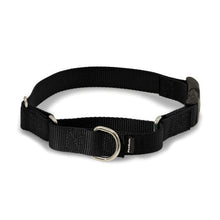What To Do About Other Dogs And Strays On Walks

Scenario 1: A stranger with their dog wants to talk to you to let your dogs "Socialize." But you've read articles here before about how this isn't the proper way to go about it. What do you do instead?
Scenario 2: A clearly aggressive stray or loose dog runs up to you and your dog barking. What should you do?

Chances are if you've had a dog and live in a town or city around other people and dogs, both have happened to you before. Both were a little sketchy, maybe Scenario 1 worked out okay because you said no. Maybe you said yes and it still worked out okay. Maybe one or both of the dogs snapped at each other, nearly giving you and the other party a heart attack. Dogs don't live in the past, they remember, but they don't dwell. So, let's talk about what to do if you encounter either of the scenarios in the future!
When I walk a dog that's mine, I never let them interact with other dogs. "But aren't dogs pack animals? Don't they need to socialize?" Yes, they are, and yes, they do need a pack to socialize with. Is that strange dog you've never seen before and their owner part of your pack? No, they are not. Therefore, there's no reason to socialize with them.

Furthermore, if you're the one in charge, pack rules are clear that you are the one whose job it is to turn strangers away. This rule is as old as time itself. The best example of a human pack leader you'll ever see is when an aggressive dog on a leash is barking at another dog on a leash... and the second dog doesn't even look their way or bark back. Lower pack members don't interject into an issue unless their pack leader tells them they need their help. If a dog starts barking at yours and yours starts lunging and barking back, that's because they don't trust you to do your duties as their pack leader and turn the threat away. In that instance, you correct them, maintain your composure, and regain engagement with your dog, as a good pack leader would.
If you're walking your dog and a stray or loose dog walks up calmly, or runs up excitedly to play, or runs up aggressively, you do the same thing. You issue a stern command of "No" and tell them to go. If they still don't leave or continue to approach, you put yourself between your dog and the other dog. This is what a pack leader does, and your dog is watching intently and judging you. If a dog respects you as a strong leader, you too will have a dog who doesn't react when other dogs act aggressively towards it in your presence. Your dog will defer to your judgment and protection out of respect. As I stated before, an owner whose dog goes ballistic at the first sight or threat of another dog has a handler who doesn't understand pack structure and is not respected as a leader.

There are added benefits to being a strong pack leader. We may try to give our dogs the illusion that we're in control at all times, but things happen. Once I was in the middle of the woods, nowhere near a trail, and had my dog off-leash. A young pit bull-type dog, probably not much older than a year ran up barking, but clearly unsure of himself. My dog just looked at him funny, and I stormed up to him and sent him back to his owner who was up the ridge by saying "No, you get out of here." A dog who doesn't respect you and expect you to have their back, in a similar situation, would've been much more likely to start a fight. In their head, it would've been a preemptive strike to defend themselves.
But at least I learned two things that day. One was that my dog respected me. He was pretty young himself at the time, maybe 2 years old, so that was nice to know. And the second lesson that was taught was unless you're on a boat in the ocean, or at the top of Mount Everest, always expect to run into an untrained, unsure dog whose handler has no control over them. That couple screamed his name a dozen times, but he didn't go back to them until I confronted him and he figured it was a bad idea to tackle a person and a dog who seemed completely unbothered by his threat display born purely of insecurity. Which was, as you might've guessed, based on the fact that he didn't have the proper foundation of pack structure instilled into him.

A dog who doesn't have a strong pack leader and who doesn't know where their place is in a pack, are very unsure and nervous, impulsive, and unpredictable. Don't do that to your dog, make things clear to them, and don't force them to associate with dogs and people outside of their pack. That's unnatural and abnormal to them.
Treat other dogs and people who are not in your pack as inanimate objects that are to be ignored unless a dog is threatening yours and isn't under the control of their owner. And in that case, defend yourself and your dog at all costs. It's always a good idea to carry pepper spray where permissible. And if you have to use it, say: "Officer, I was protecting myself because I feared for my safety." Nobody on the planet understands that sentence more than a police officer.

If you liked this article or learned something, leave a like, and share it with friends and family. Thank you.
You might also like: Should You Let Strangers Pet Your Dog?
























